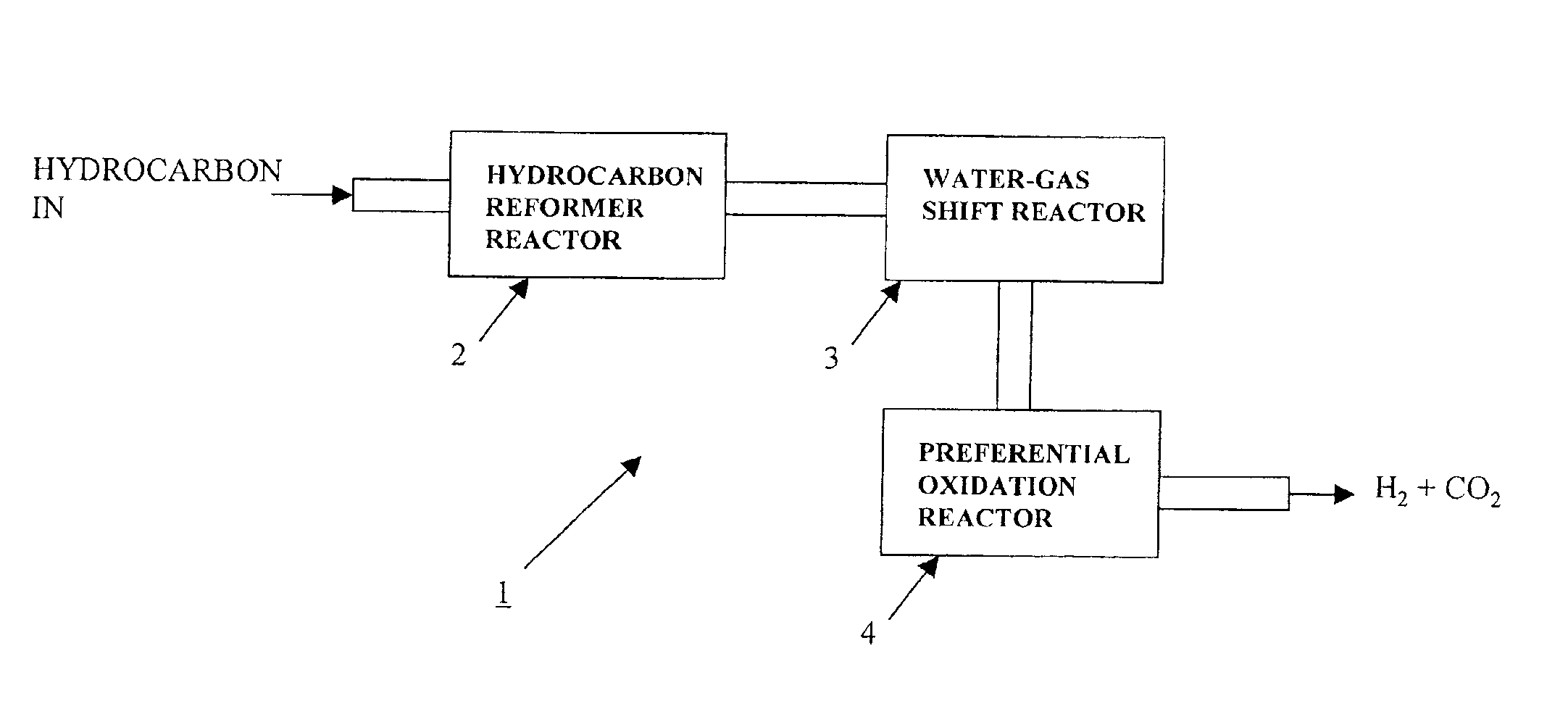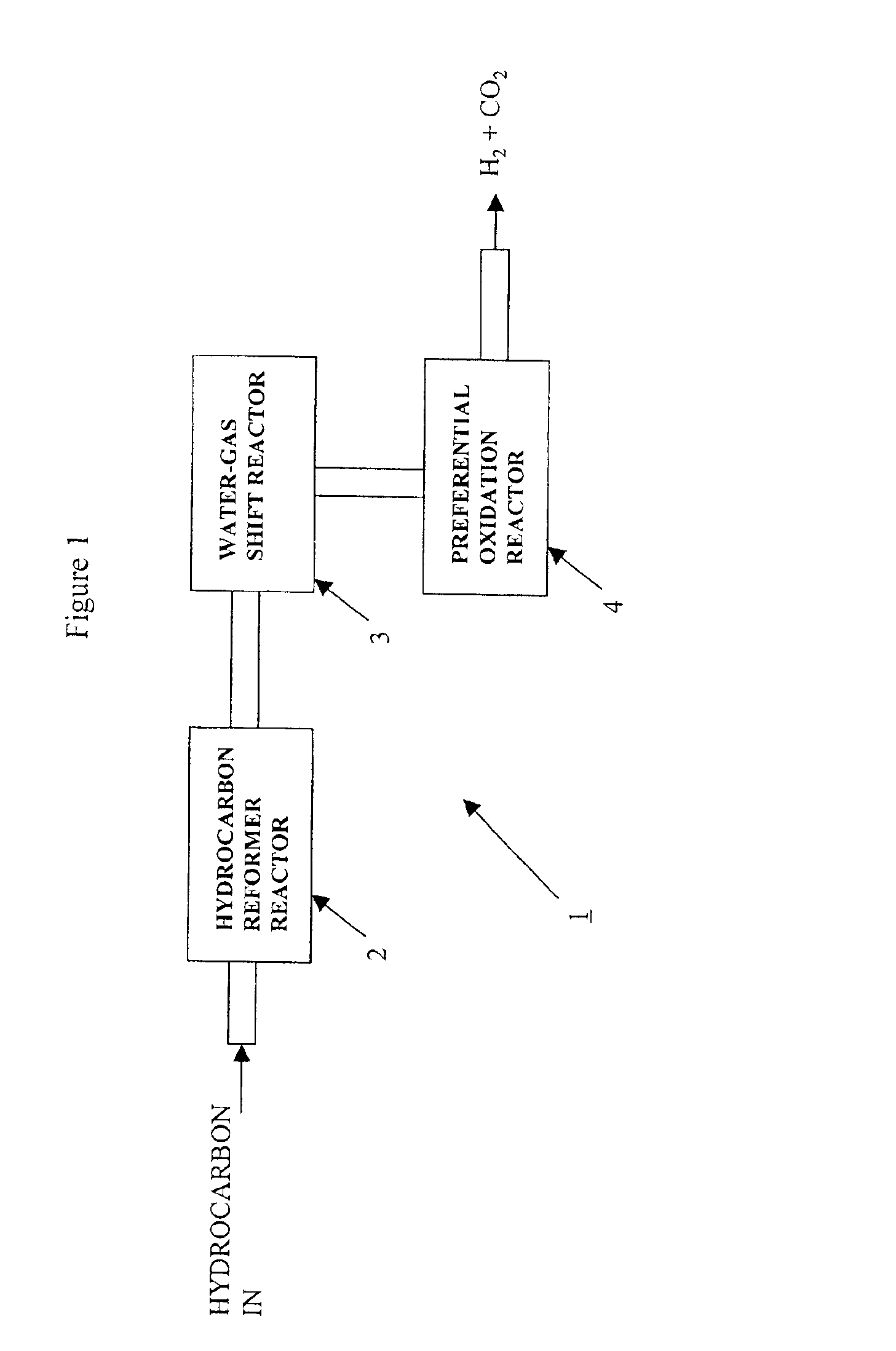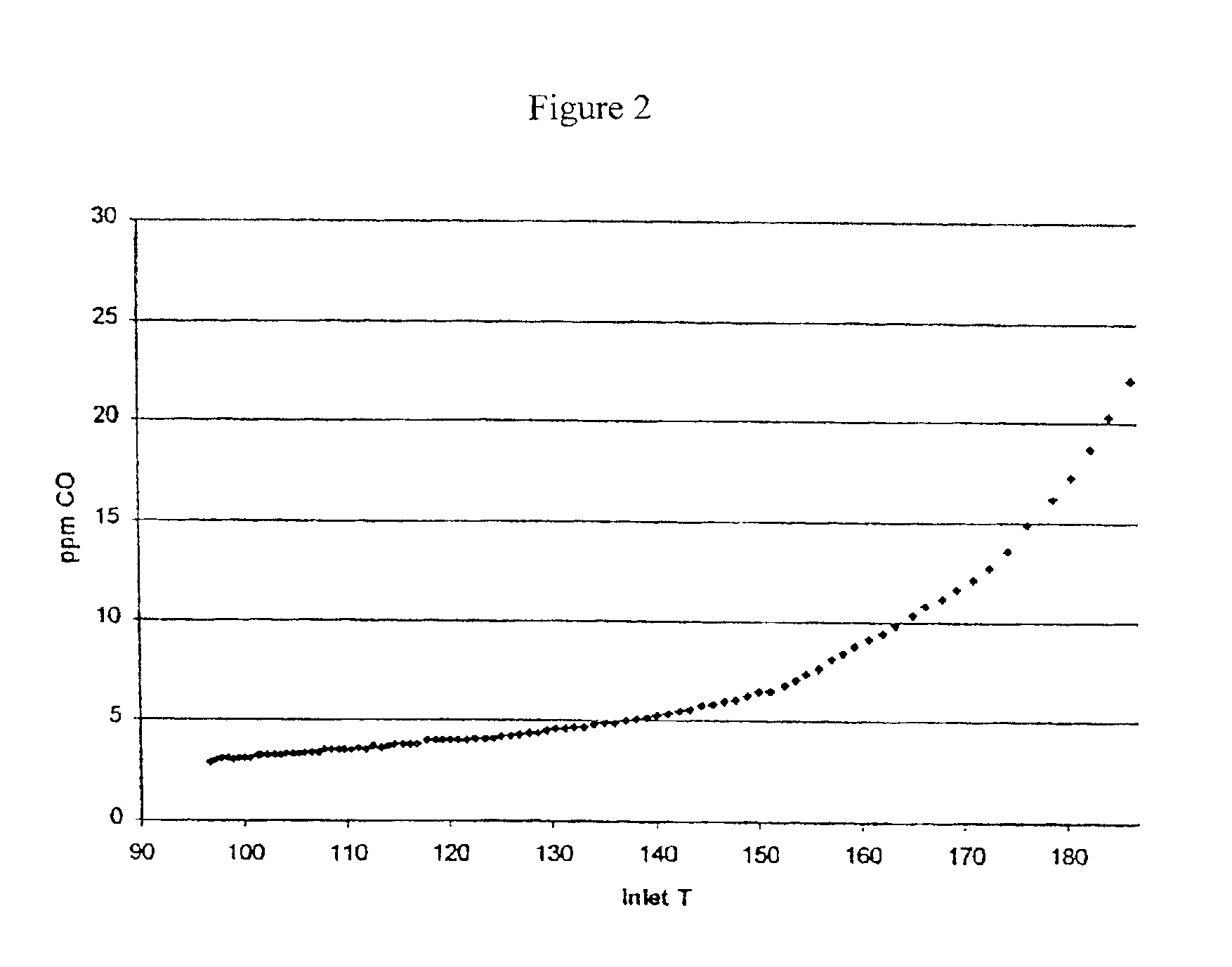Platinum group metal promoted copper oxidation catalysts and methods for carbon monoxide remediation
a technology of copper oxidation catalyst and platinum group metal, which is applied in the direction of physical/chemical process catalyst, bulk chemical production, separation process, etc., can solve the problems of difficult to achieve carbon monoxide levels as low as these, deterioration of platinum, adversely affecting fuel cell performance, etc., and achieve high mechanical strength
- Summary
- Abstract
- Description
- Claims
- Application Information
AI Technical Summary
Benefits of technology
Problems solved by technology
Method used
Image
Examples
example 1
Preparation of a Copper Ceria-supported Preferential Oxidation Catalyst Impregnated with 0.5 wt. % Pt. (Exemplifies Preparation of Catalyst B Deposited on a Monolith Substrate, Catalyst B1, B2 and C)
[0106]205 g of cerium oxide powder (HSA-15 cerium oxide available from Rhodia, Inc.) was impregnated with 80.6 g of copper nitrate solution in water using the incipient wetness method. The powder was calcined using a two-step process; holding the temperature at 120° C. for 2 hours, and then at 500° C. for 2 hours. The powder was cooled to yield an intermediate powder of 215 g cerium oxide impregnated with 8 wt. % copper oxide (CuO). This composition was used to prepare Catalyst C.
[0107]The intermediate powder was then impregnated with an aqueous solution of alkali-free amine-solubilized platinum hydroxide containing 1.08 g of platinum. After 1 hour, acetic acid was added to immobilize the platinum on the cerium oxide support. The resulting material was calcined using the two step procedu...
example 2
Determination of CO Conversion Using Catalyst B1 (Single Bed)
[0113]Catalyst B1 of Example 1 was tested for its carbon monoxide conversion and selectivity when exposed to a test gas composition that modeled a reformate gas stream. The test gas had a dry gas composition of 0.3% CO, 15% CO2, 50% H2 and the balance was N2. 25% steam was added as a diluent. Air was added as a source of oxygen. The catalyst was placed in a quartz tube reactor, exposed to the test gas, and oxidation began at the minimum temperature measured, 90° C. The space velocity of the test gas composition was 15 k / hr. The inlet temperature and the O2 / CO ratio was adjusted to yield a product gas stable with respect to CO concentration. The catalyst reached at an inlet temperature of 140° C. and an O2 / CO ratio of 1.5. The product gas contained 550 ppm of CO, which is equivalent to a CO conversion of 82%. 27% of the added O2 reacted with the CO.
example 3
Determination of CO Conversion from an Input Gas Stream Containing 1.5% CO Using the Catalyst of Catalyst B1 (Two Sequential Beds)
[0114]Two sections of the B1 catalyst of Example 1 were arrayed in series with respect to the input gas stream. The temperature of the first bed was 125° C., while the temperature of the second catalyst bed was 128° C. The test gas composition in this example contained 1.5% CO, 15% CO2, 50% H2 and the balance was N2. 25% steam was added as a diluent. Air was added as a source of oxygen. The monolith space velocity of the gas stream was 15 k / hr over the first catalyst bed and 30 k / hr over the second catalyst bed. The O2 / CO ratio of the initial gas stream was 0.75. After contact with the first catalyst bed, the CO concentration in the intermediate gas stream was 5440 ppm. Air was injected into the intermediate gas stream before contact with the second catalyst bed to increase the oxygen concentration to 0.39%. After contact with the second catalyst bed, the...
PUM
| Property | Measurement | Unit |
|---|---|---|
| Temperature | aaaaa | aaaaa |
| Temperature | aaaaa | aaaaa |
| Temperature | aaaaa | aaaaa |
Abstract
Description
Claims
Application Information
 Login to View More
Login to View More - R&D
- Intellectual Property
- Life Sciences
- Materials
- Tech Scout
- Unparalleled Data Quality
- Higher Quality Content
- 60% Fewer Hallucinations
Browse by: Latest US Patents, China's latest patents, Technical Efficacy Thesaurus, Application Domain, Technology Topic, Popular Technical Reports.
© 2025 PatSnap. All rights reserved.Legal|Privacy policy|Modern Slavery Act Transparency Statement|Sitemap|About US| Contact US: help@patsnap.com



